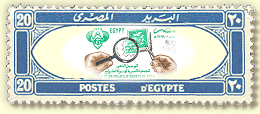

| Q28 January 19, 2009 member 239 Drawing of postmarks. The original postmark Study VI was entrusted to Seymour Blomfield, who published his results in both the QC and L’OP. He also drew “cuts” (postmarks) and issued them on sheets to members. Further articles and notes have been published occasionally in the QC subsequent to the last addendum sheet in about 1970-80. Originally the only practical method of making up these sheets was by tracing and hand-drawing the postmarks. The accuracy and care in these drawings and in the subsequent ones published in the QC has varied enormously. In about the Seventies photocopies began to appear in the QC, but again these suffered from variation in quality and often came with the stamp as well. Now we have progressed to scanners that allow good accurate postmarks to be produced for either paper publication or internet display. If there is a perfect strike of the postmark, away from the stamp and any other markings on the cover/piece, then such a scan would be the perfect solution for the postmark studies. The only found mark, however, is often poorly or partly struck and may be badly smudged. With the aid of a computer and a Paint software package one can take out background colours, combine two different part-strikes, clean up some of the smudge marks and even fill in missing parts of the postmark, if you have the confidence to do so. By the time work has been completed you may well have a fair representation of the original postmark. Remember that the Study Circle’s original drawings are of a similar “built-up” nature, with the circle drawn with a compass or from a template with different-sized circular holes, and straight lines drawn with a ruler. | ||||||||||
| ||||||||||
| In some ways 4 and 5 represent the marks like the current darwings but are they too far removed from the original. This could have the benifit that if the darwings
are used for forgeries are are more obvious. If however one is trying to distinguish too similar markingsor handstamps then these are obviously not good enough. So the question is using computer scans how should they then be used for postmark studies? | ||||||||||
| R1 Febuary 5, 2007 member 240 This is a very ticklish question. In going back over many published drawings and comparing them with original markings I have often found discrepancies, with the "idealised" drawing often varying quite considerably from the original, particularly in the Arabic lettering, but also in the shapes of the European letters. One important case was that of the "two types" of the postmark of the Savoy Hotel in Aswan - after much research, it was agreed that in fact there was only one, and that the two "types" had resulted from drawings based on slightly mis-struck originals. There were at least ten differences between the two drawings that did not exist in the original. A scan from an original strike clearly has to be a better bet - but those preparing the scan for reproduction in the QC or elsewhere should guard against being over-helpful in "improving" a scan with what they believe should be there! Better to see a part-strike properly reproduced than one that has been added-to from the depths of the operator's imagination. The number of postmarks nowadays coming to light on covers rather than mainly on stamps as in days gone by will probably mean that for even the rarest, a part-strike might soon find a companion, and from two part-strikes a complete whole can be combined. I would urge all interested in postmarks to respond whenever an appeal is made for help in this area - and for those making the original scans and improving them as suggested in the diagrams above to do so with the lightest of touches. I would argue that even No 4 above has gone too far - there might be some nick or break or curve in the date-box or the outer circle that could prove significant - by making it a perfect rectangle or circle we might unknowingly be concealing useful evidence. By all means alter contrast and use whatever other software tricks might be available to clarify the faintest of marks; but what is not there should remain a blank until it can be faithfully and accurately rendered from another strike. |
|
|